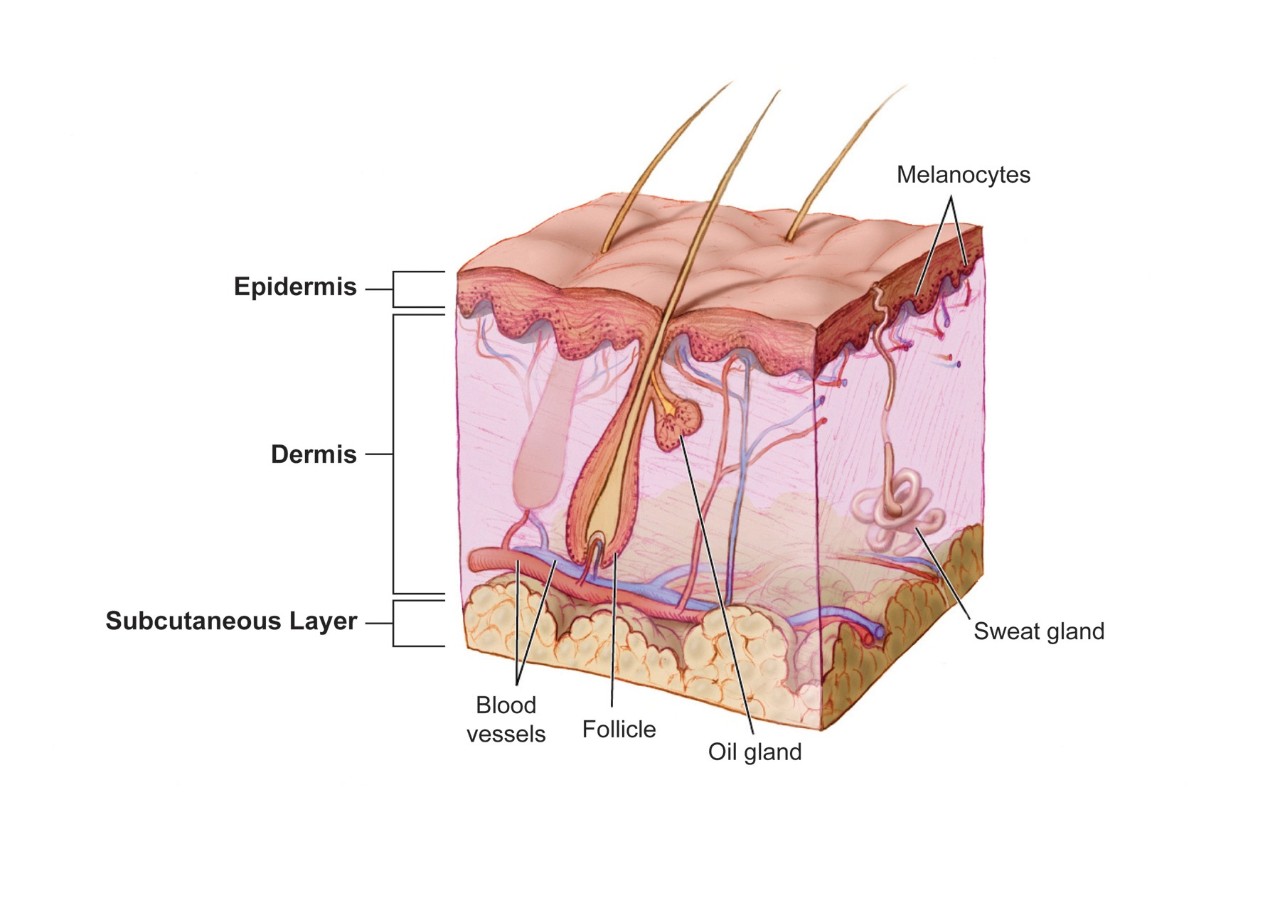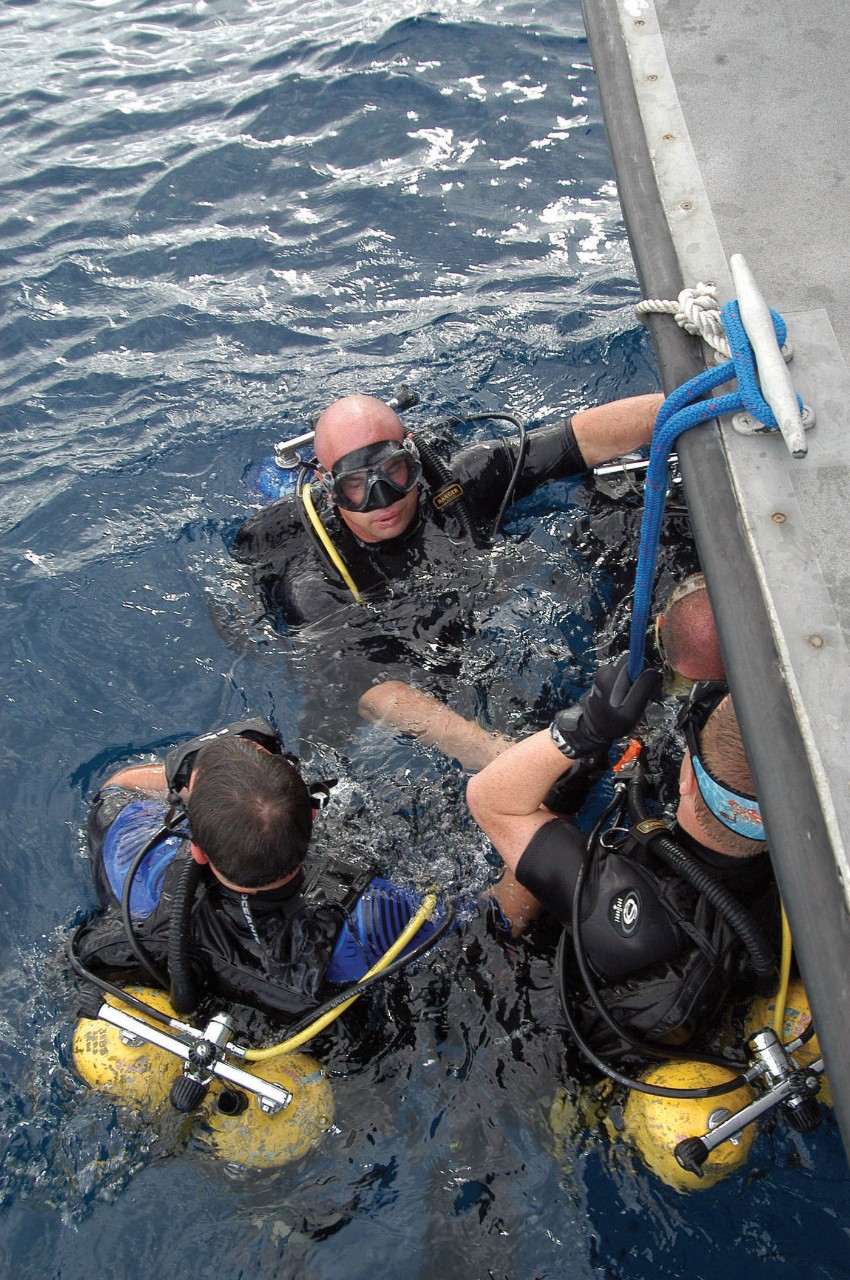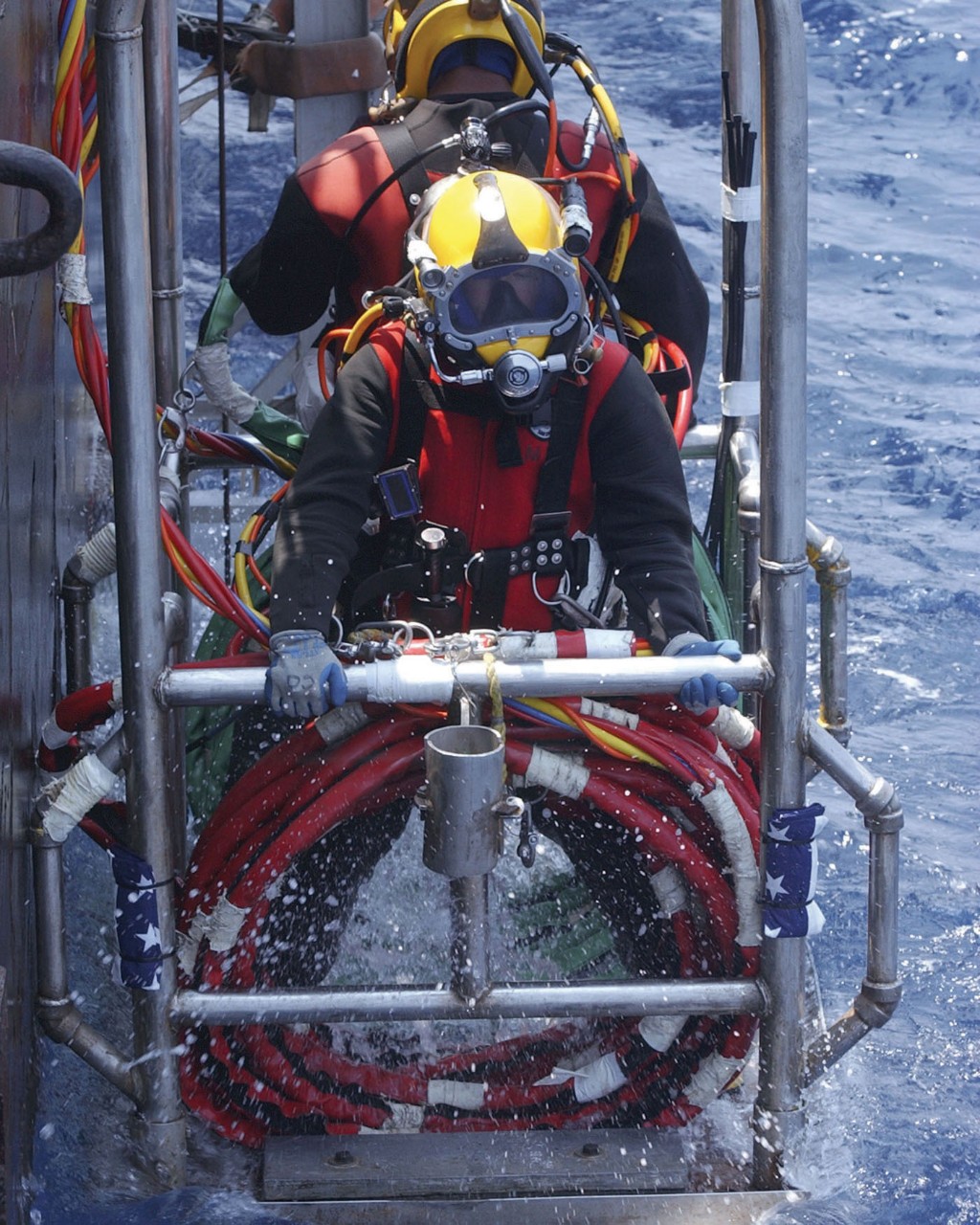The Skin They're In: U.S. Navy Diving Suits
Let's Dive In - Into Your Skin
Our skin is our body's first line of defense. It keeps out germs and protects our muscles, bones, and organs. Skin helps divers by repelling water, but hinders them by losing heat easily.
Click photograph for a larger image.
Protective Layers
Skin has three layers - the epidermis, the dermis, and the subcutaneous layer. Two of these layers help safeguard divers. The epidermis, the outermost layer, acts as a protective barrier by keeping water from entering the body. The innermost subcutaneous layer, composed of connective and fat tissue, supplies some thermal insulation.
Photo: Water reduces the subcutaneous layer's ability to retain warmth. Body heat escapes through skin almost 25 times faster in cold water than in cold air.
Thermal Protection
Diving suits supply more thermal protection than human skin can. Navy divers choose the suits they wear based on the water temperature, personal physiology, expected hazards, and the type of work they will do.
Photo: Members of Mobile Diving and Salvage Unit One wear short-sleeve or lightweight coverings during a shallow-water training exercise in Hawaii (top).
Divers for the 2002 USS Monitor salvage operation wore heated hot water suits for the cold, deepwater dives they carried out (bottom).





